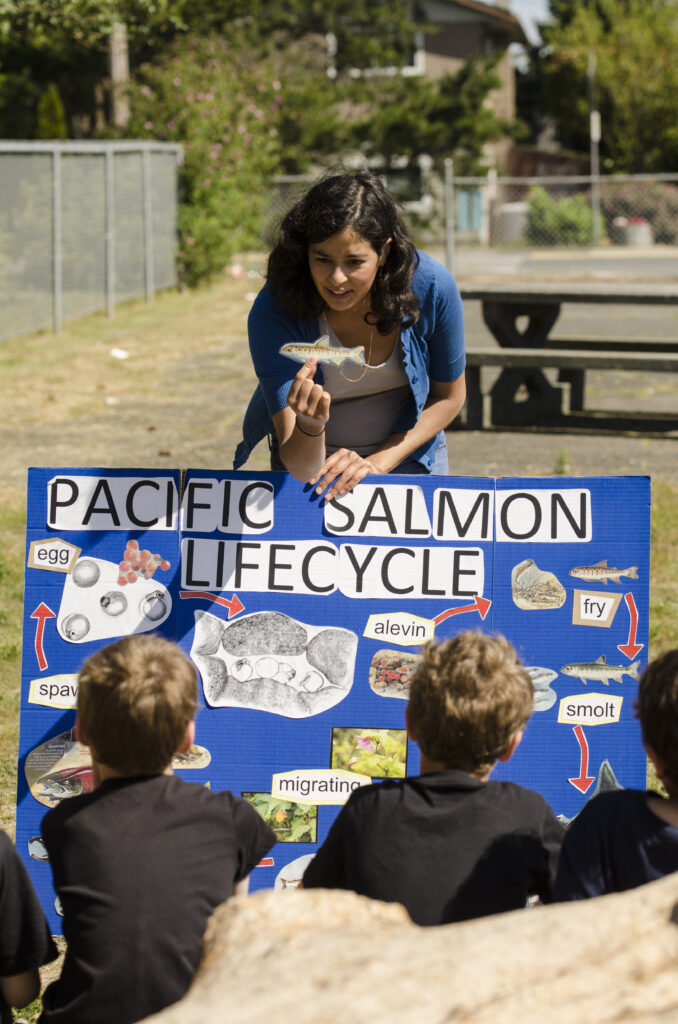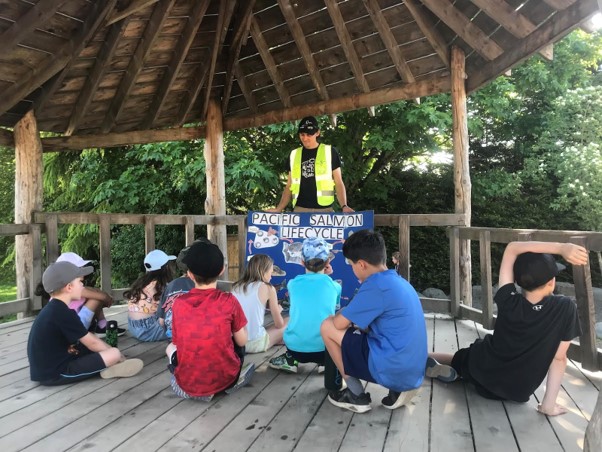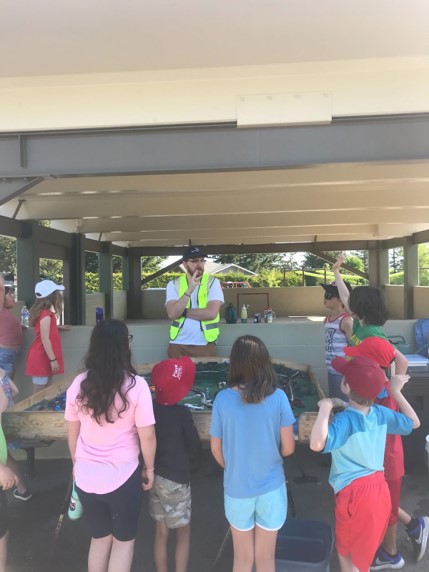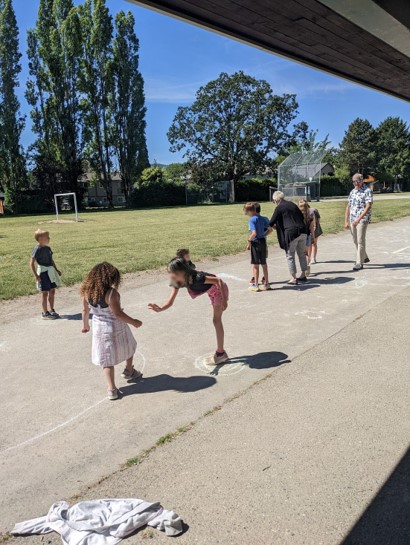Another successful grade 3 education season in the books!
As our grade 3 environmental education program draws to a close for the season, we leave with a greater appreciation for the importance of this program to the goals of Peninsula Streams. Not to mention a greater appreciation for elementary school teachers! Our grade 3 program involves two lessons: the watershed model and the Pacific salmon lifecycle. Each lesson offers a dynamic and hands-on way to engage students in natural sciences and connect them to the watersheds that they live in and the ecosystems that surround them.
Our goal is to achieve healthy aquatic habitat that supports self-sustaining populations of native species in both freshwater and marine environments. And who is a more important stakeholder in that than our children?
Our elementary environmental education programs are important as kids will grow up to be decision makers, farmers, business owners, landowners, etc. But even more important than who these children become, is who they are now. The drivers of climate change and ecological degradation are beyond what a child has any control over, but that doesn’t mean we should overlook children as active stakeholders with agency and power. If children are old enough to learn about climate change they are old enough to be stewards of their environment and make a difference—not because they're responsible for the damage, but because they need to feel empowered to make a difference in order to maintain hope. Simply by offering a child a better understanding of an environmental problem, they have a remarkable ability to come up with environmental solutions and ways they can make a difference.
In our watershed model demonstrations we talk about pollutants in the watershed. One example we demonstrate is the use of pesticides. We ask students to think about what impact pesticides could have on the ecosystem and ask prompting questions: What do pesticides kill? Insects! What animals eat Insects? Fish! Woodpeckers! Lizards! Frogs! Spiders! What do we rely on to pollinate our food? Bees! Birds! Butterflies! You can see the wheels turning in the kids' heads as they think about the ecological role of the animals we see as ‘pests’. The next question I usually ask is what we could use instead of pesticides. During one watershed presentation, I didn’t even get to this question before one kid’s hand shot up in the air: “If frogs like to eat bugs why don’t we use frogs to get rid of the bugs we don’t want instead of using pesticides that poison the fish in the creek!”. Without much prompting, this 8-year-old used ecosystem knowledge to propose a nature-based solution for an environmental problem. I thought that was pretty cool.
By empowering kids with knowledge of how their local watersheds work and what’s threatening them, they can begin to see themselves as active participants and stewards of their watersheds who can influence the decisions of the adults around them. They can go home and say to their parents “Why don’t we pull the weeds out of our lawn by hand instead of using weed killer that ends up in the ocean when it rains!”. We use refillable water bottles as “rain clouds” for our watershed model that students use to “make it rain” on the model and see where the pollution ends up. After a presentation at Sidney Elementary School, there were a few “rain cloud” bottles with water leftover that I was pouring onto the grass so they wouldn’t leak in my car on the drive home. A little girl approached me and said “Excuse me, why are you wasting water, that is not good for the environment”. I did this in a rush without thinking twice. I sheepishly told the girl she was absolutely right and together we used the leftover bottles to water a nearby tree.
Long story short, the bright minds and spirited energy of the many grade 3 students around Greater Victoria we had the pleasure of working with this spring have instilled in us a renewed sense of hope!
Written by Hannah Grant, Environmental Stewardship Technician




